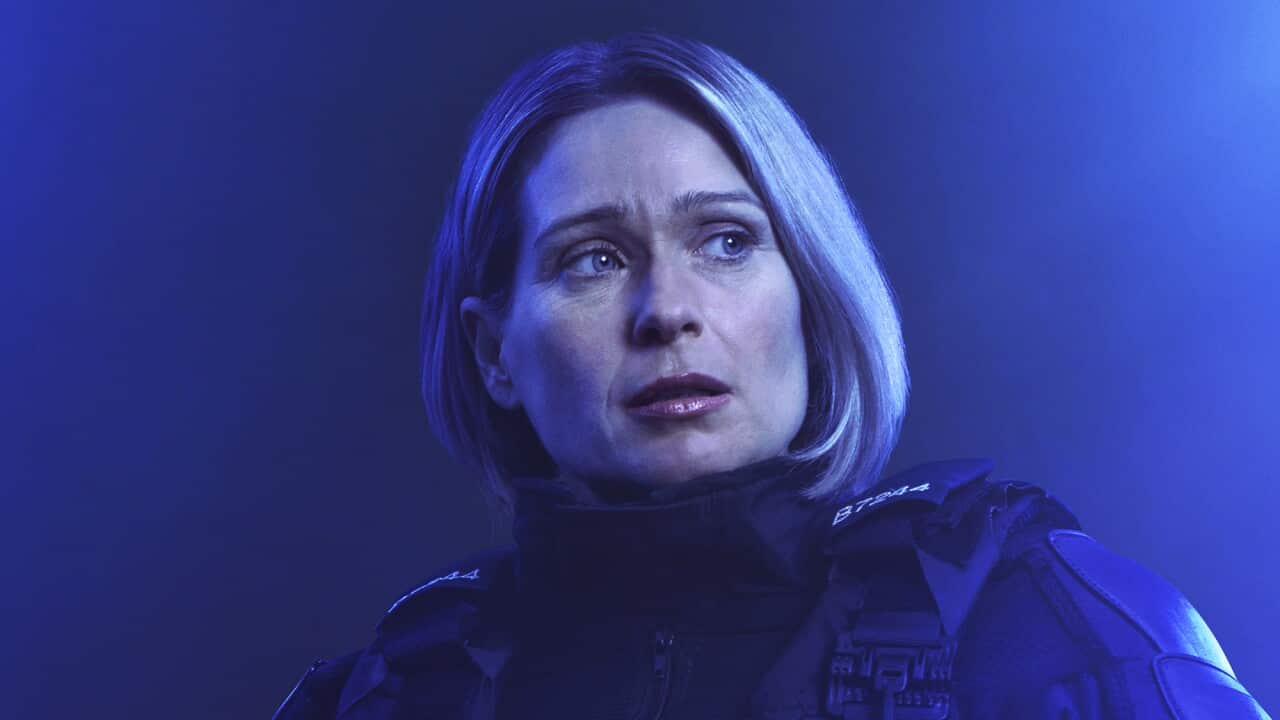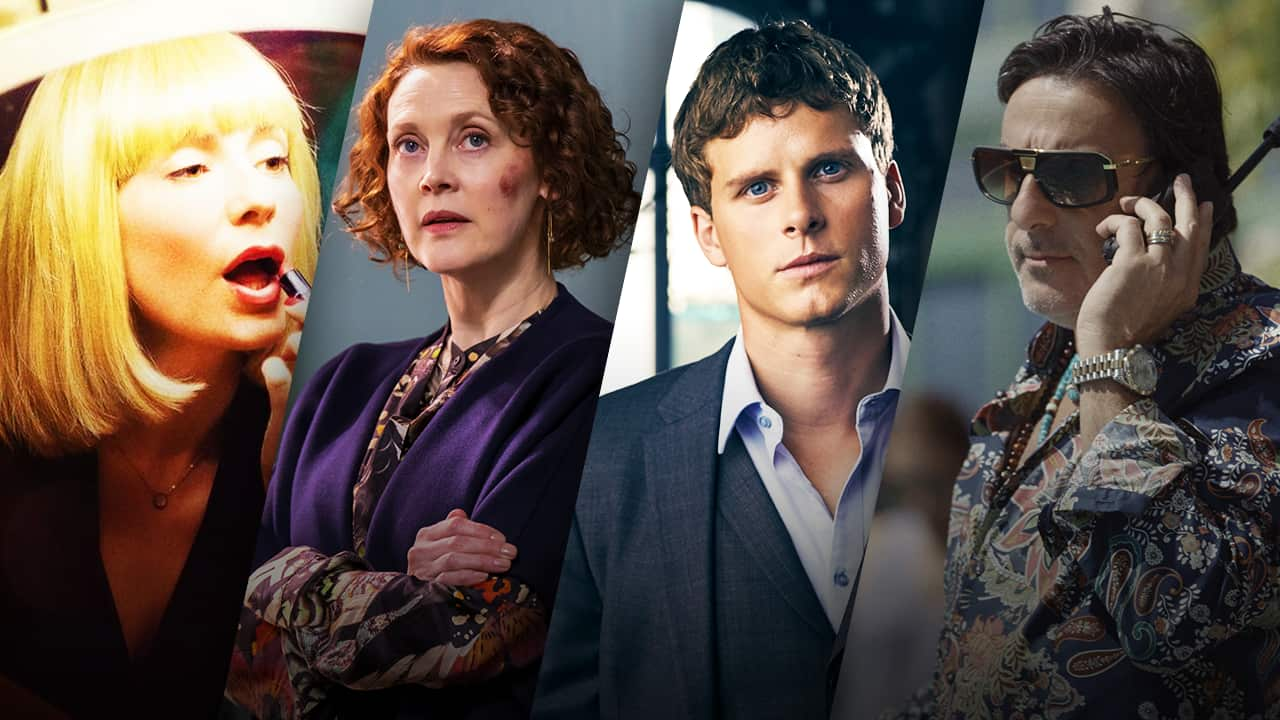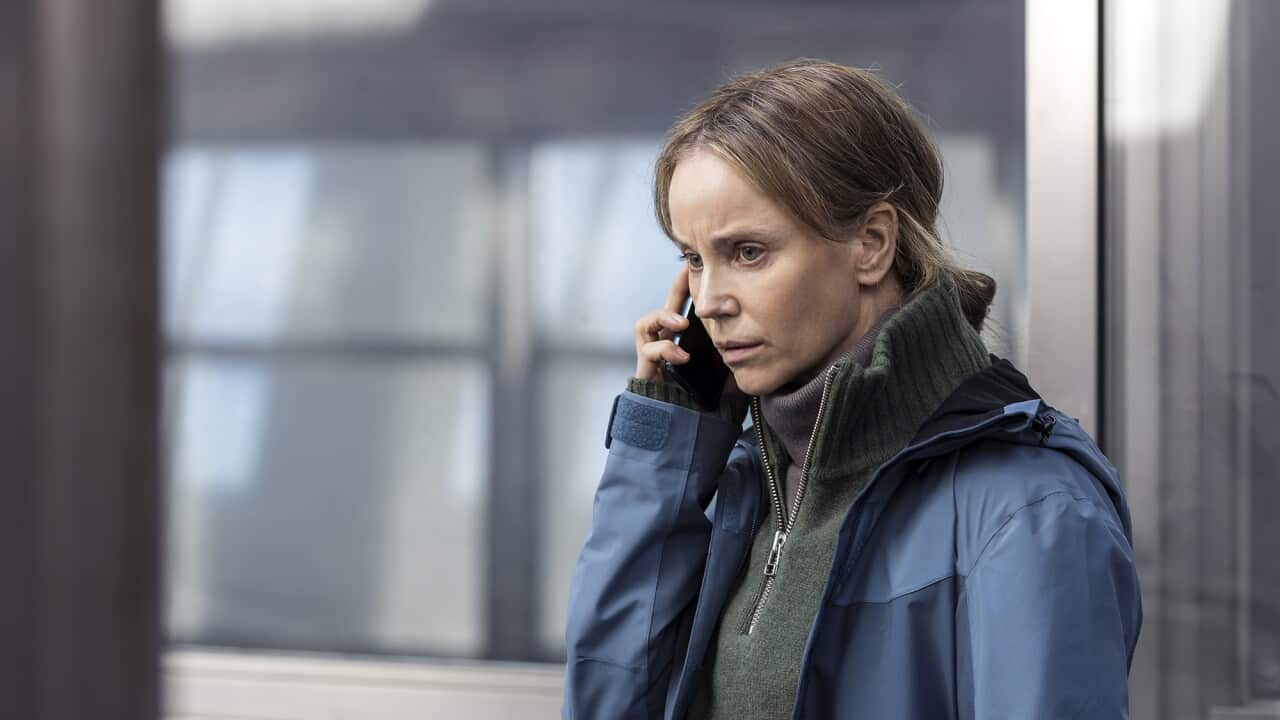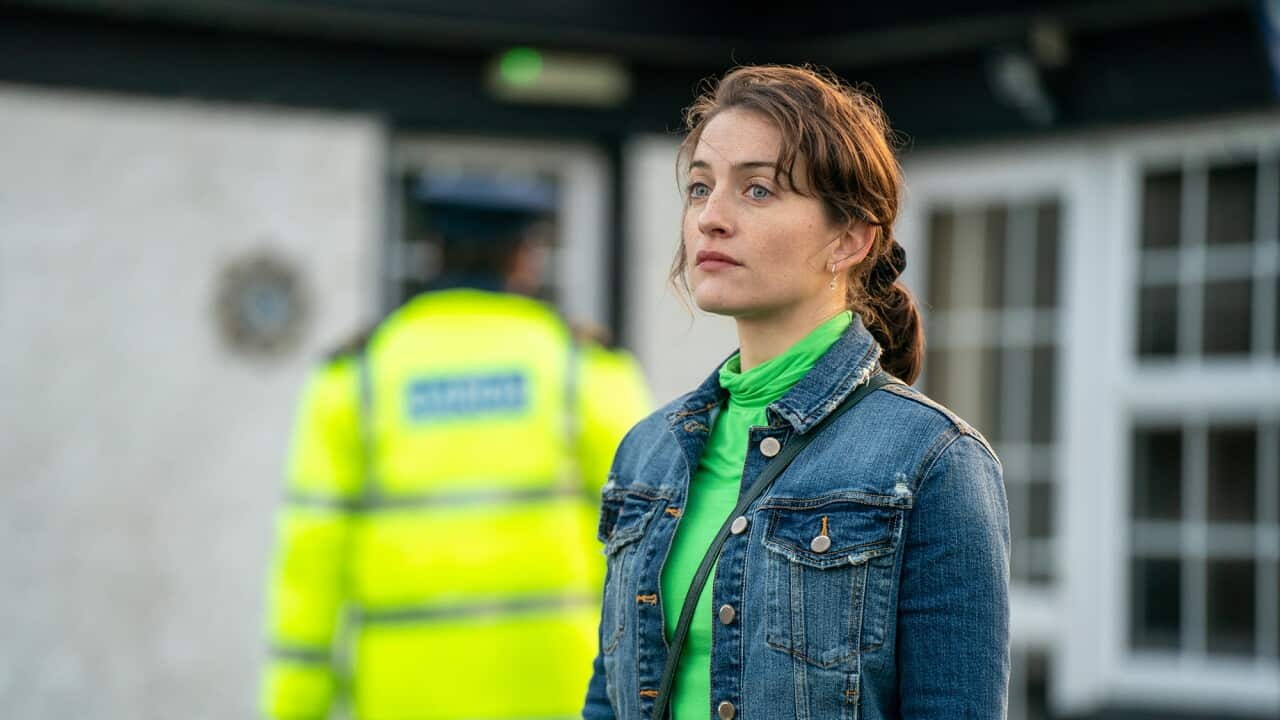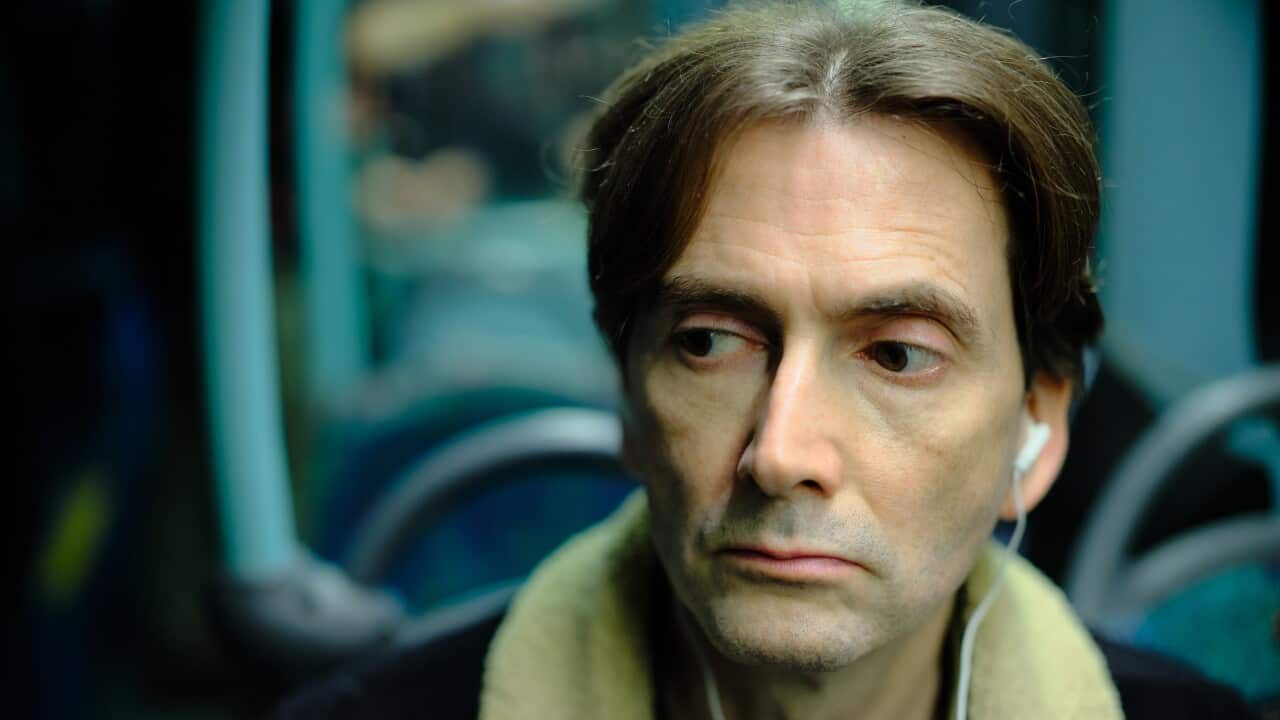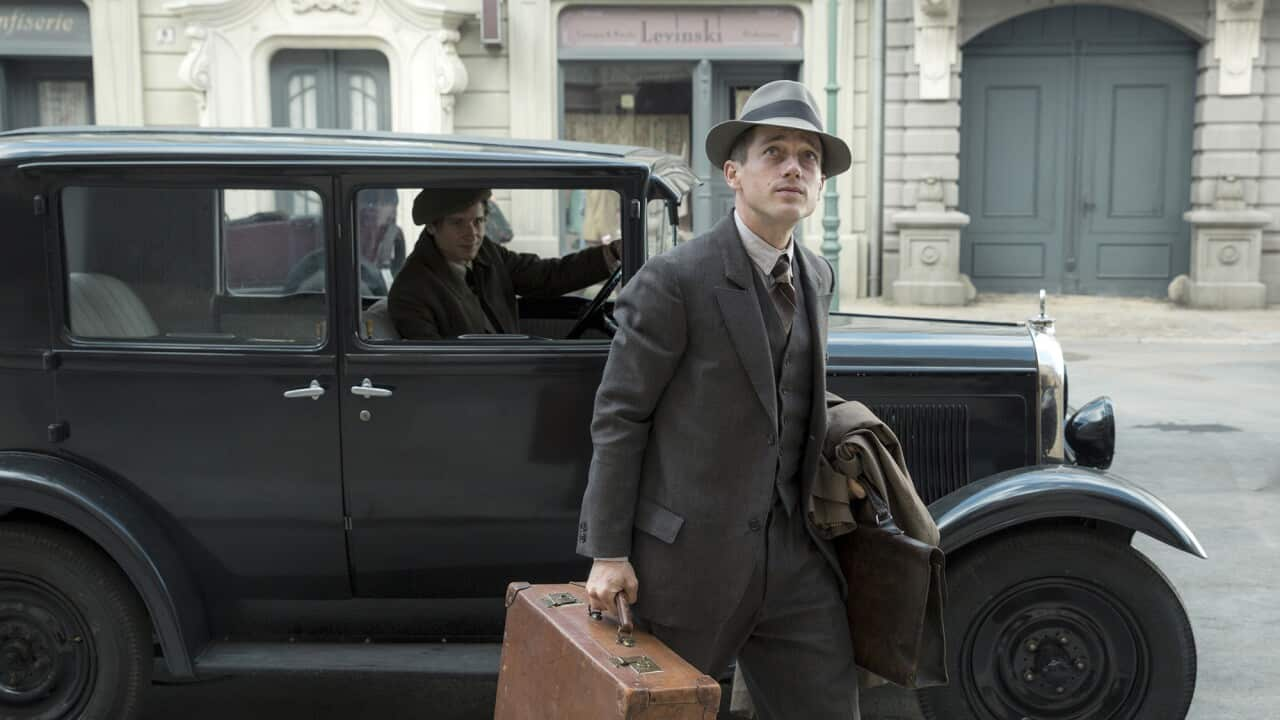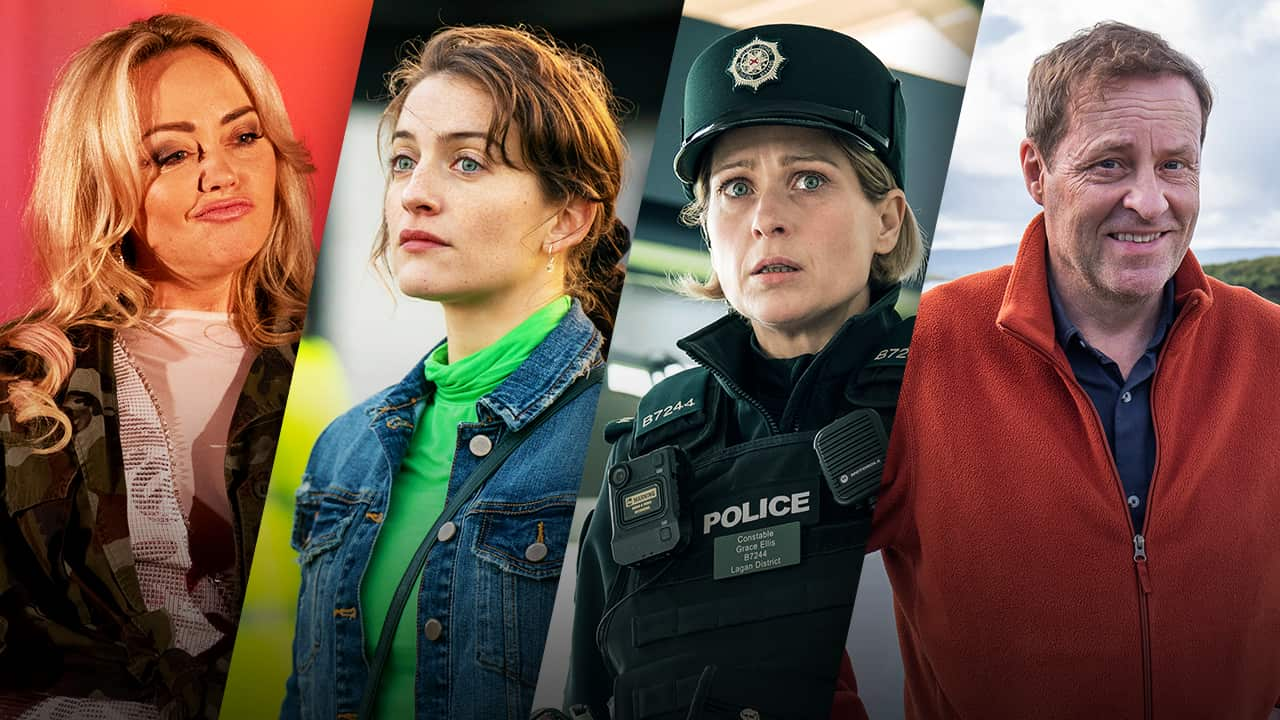After an acclaimed first season, Irish police drama Blue Lights is about to take us even further into the grey. How far would you go to try to make things better? How much would you compromise who you are to achieve what you think matters?
“Series one was about our recruits having their feet held in the fire and in series two they are firmly in the fire,” says co-creator Declan Lawn of what’s in store as a new wave of crime confronts the Belfast police force.
Season one introduced Grace Ellis (Siân Brooke), Annie Conlon (Katherine Devlin) and Tommy Foster (Nathan Braniff), rookie police officers who find themselves struggling to survive the daily challenges of their new jobs. After a death that shocked the force, season two picks up a year later, with a new face challenging for power in the city and new professional and personal challenges for various police officers.
Here, Lawn and co-creator/director Adam Patterson, who also co-directed episodes 1-3 of the new season, talk about the joy of seeing season one so well liked (“the show is our hearts on screen”), why season two is taking more risks, and what the force is facing this time around.
[Note: we’ve avoided major spoilers in the following, but if you haven’t watched season one, we'd suggest ]
How did it feel to come back to series two of Blue Lights?
Declan: Coming back for series two was like coming back to meet old friends and then devising new ways to put your old friends through torture. It was a joy to be back filming again.
Adam: Coming back for series two was a dream come true for us; to be working like this in our home town and to be able to make a show about the place that we love is something quite special that comes around really rarely.

Behind the scenes on season 2: Katherine Devlin, who plays Annie; director Adam Patterson; and Nathan Braniff, who plays Tommy Foster. Credit: Christopher Barr / BBC / Two Cities
Were you surprised at the success of the show?
Adam: The success of the show caught us off-guard because even though we had high hopes for it, you never know how people are going to react. We wanted to make a show that we were proud of, that people in Northern Ireland loved and a show they felt represented the place we all love. We invested a lot of ourselves in the first series.
Declan: The success of series one has at times been overwhelming and that’s because the show is our hearts on the screen. When other people reacted emotionally to it, that really struck us.

Annie (Katherine Devlin) in the thick of it in ‘Blue Lights’ season 1. Source: BBC / BBC/Two Cities/Steffan Hill
Why do you think the show struck a chord with the audience?
Declan: Blue Lights is set in a very specific place. It’s hyper local yet universal in its themes. Everyone has started a new job, has felt under pressure, and to some extent, everyone has found a family that’s not their own family. These things affect all of us regardless of where we are from so perhaps that had something to do with why it seemed to resonate so much.
Adam: The great television dramas that we look up to and aspire to are about family. From the outset Blue Lights looks like it’s about the PSNI [Police Service of Northern Ireland] but actually it’s about people and how they react when they are under pressure. We all need love, hope and optimism in our lives to get through great difficulty and I think that’s why Blue Lights has hit on that universal theme where people around the world see a bit of themselves.
How has series two been elevated from the first series?
Declan: Series two is bigger, bolder and more dramatic. Series one was about our recruits having their feet held in the fire and in series two they are firmly in the fire. The city is under siege with drugs and petty crime and they can’t work out what’s going on nor do they have the resources to deal with it. At the heart of the series is a story about [someone], who returns to see the place he has grown up in torn apart by drugs and crime. He decides to wage a one-man revolution against the loyalist godfathers and it causes total chaos for our police officers and the city in general. Everything spirals out of control and the pressure grows.
Adam: In series one we had three new recruits in an alien world, but they are now a year into the job and we see them taking a few more risks. Creatively, we are also taking more risks. There’s a lot of Belfast to look at and we wanted to shine a light on different parts of the city. One of the unifying themes about series two is how difficult it is to initiate change ... It’s about how far can you go to try and do good in the world. It’s all about the grey which is where Blue Lights lives.
L-R: Stevie Neil (Martin McCann), Grace Ellis (Sian Brooke), Annie Conlon (Katherine Devlin), Tommy Foster (Nathan Braniff) Credit: Todd Antony / BBC / Two Cities
How would you describe series two of Blue Lights?
Declan: The central theme of Blue Lights is idealism v pragmatism which is in the DNA of the show and in every character. We all live in the space between the two; who we want to be and who we are. This series delves further into that. Everyone has ideals but they have to compromise them. It’s about the daily grind and what that does to you and how, as a cop and as a person, you can never be exactly who you want to be. It’s also about why family matters and if you don’t have a family, often you will find yourself quite lost.
What risks have you taken with the second series?
Adam: We’ve taken more risks in the way we’ve represented the areas we are filming in and the big set pieces so I think we’ve pushed the boundaries of what we felt we could do creatively whilst still retaining that authenticity and acceptability that pertains to representing a contemporary place like Belfast. Some of what we’ve filmed has not been easy to show because it requires us to look at ourselves deeply as a society which is difficult because there are no easy answers. We are shining a light without giving the answers which creatively is quite difficult but if you have great characters at the heart of it you can accept that we don’t always need definitive answers. You just need to see how people react when they try to do something in the moment.
How has the style and tone of series two changed from series one?
Adam: Stylistically in series two we wanted to evolve and show more of Belfast and I don’t just mean having more shots of officers in Belfast but standalone shots of the city that mean something to the storyline. We really worked hard to find the tapestry and the blanket imagery that would lead into our worlds and people and that led to it feeling more visceral and real. We wanted to show more of this place that we love but that is still in many ways troubled.

New additions in season two include Shane Bradley (Frank Blake). Credit: Christopher Barr / BBC / Two Cities
What challenges do the recruits and the other characters face this series?
Declan: Series one was about what it takes to do the job and series two is about what the job takes from you. It’s about the relentless, grinding daily pressure of doing that job and going out on those shifts, day after day. We see our recruits are still newish to the job but they’ve had to grow up fast and had to learn fast. The other difference between the first and second series is that in series one they were a small section against the world but now we see there is a danger within the team in a couple of characters who join and who aren’t a good influence. It’s about what happens when this group is contaminated from outside and the conflict, pressure and danger that engenders.
Adam: We meet our recruits a year on but have they retained that optimism and hope that we saw when they first joined the force? If not, psychologically how does that affect them and the people around them? How do you continue to put yourself in danger if you’ve lost the belief that you can really change the world and I think that defines the character developments in Blue Lights.
This is an edited extract of material from Two Cities Television.
Catch the second season of Blue Lights Thursdays 9.30 pm from 18 April on SBS. Episode 1 of the new season is streaming now at SBS On Demand on 18 April, with episodes 2-6 available from 3pm 22 April. Season 1 is streaming now at SBS On Demand.
Stream free On Demand

Blue Lights

